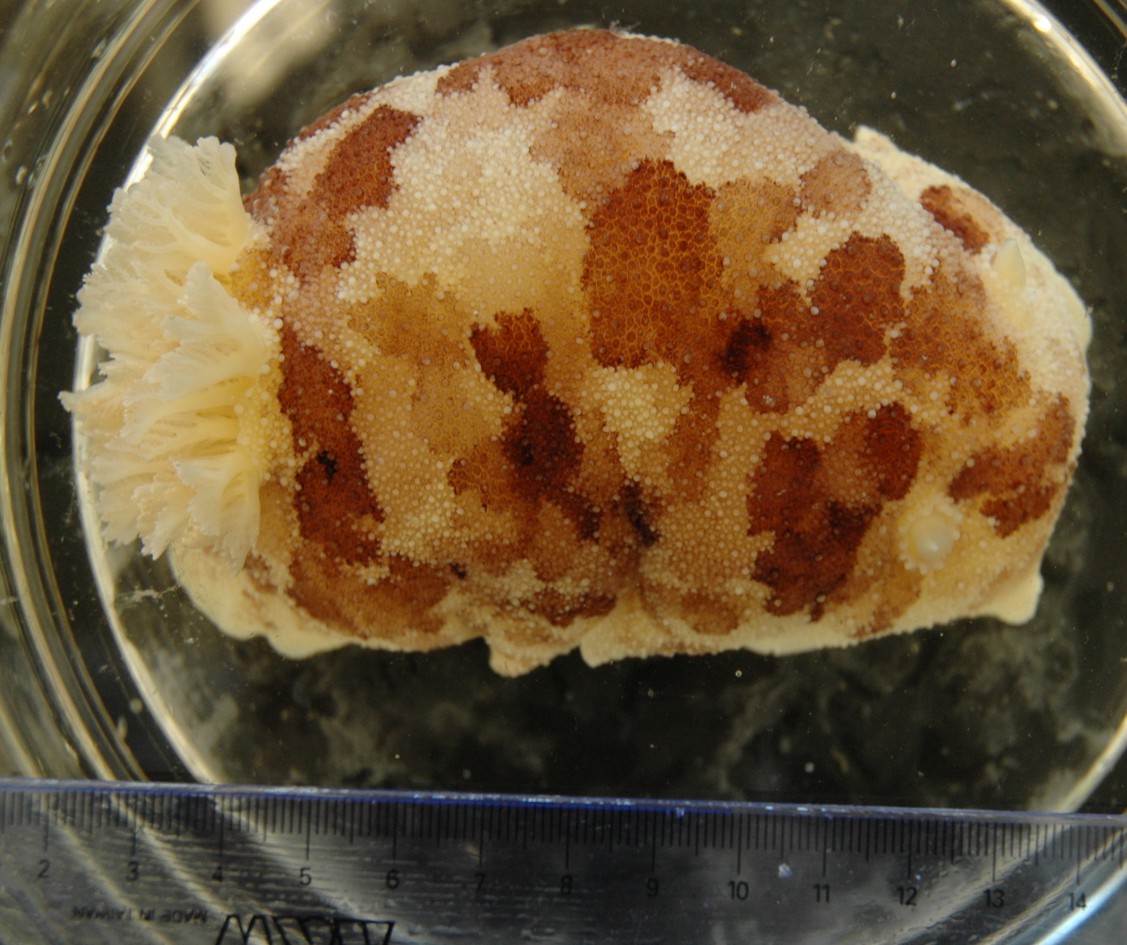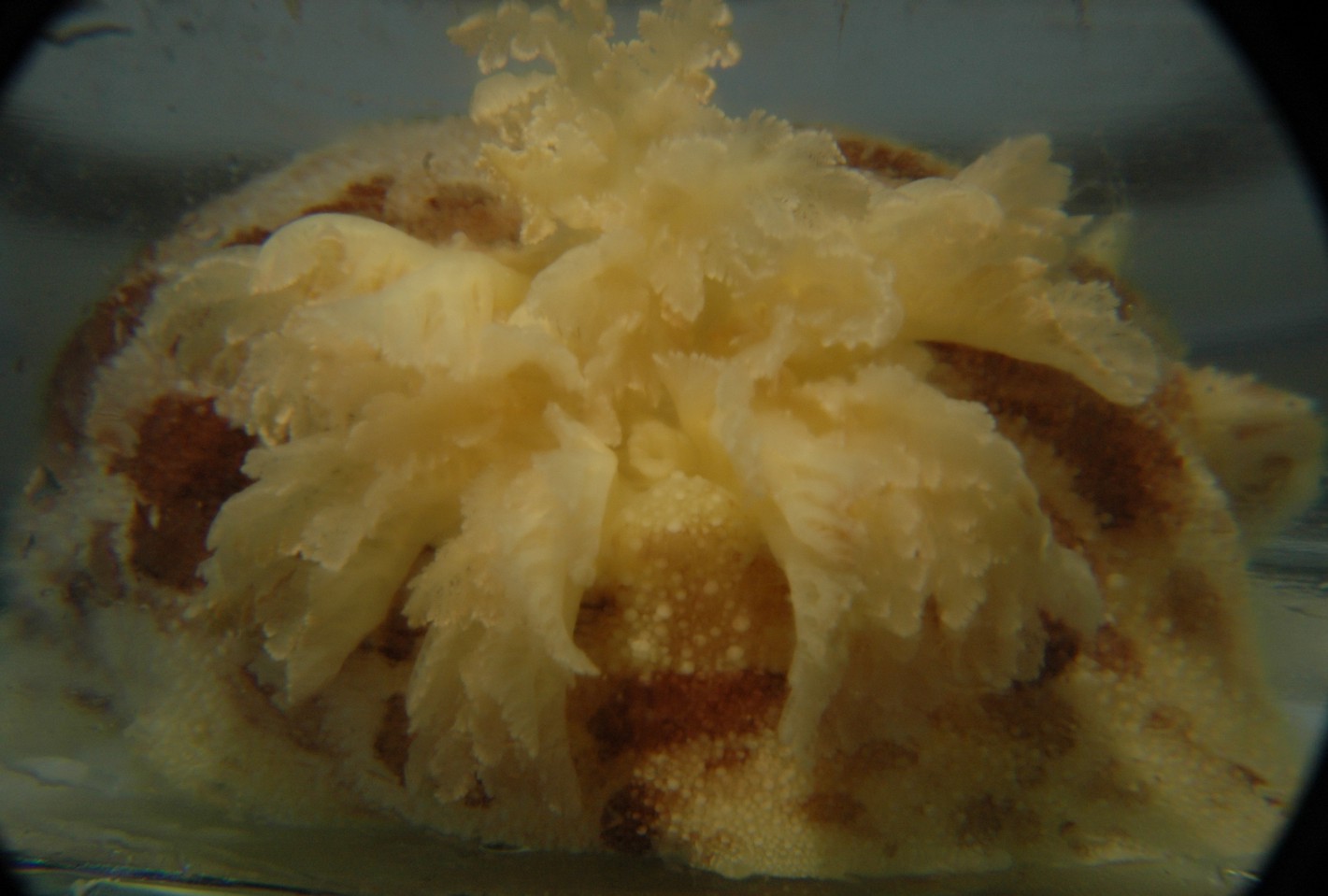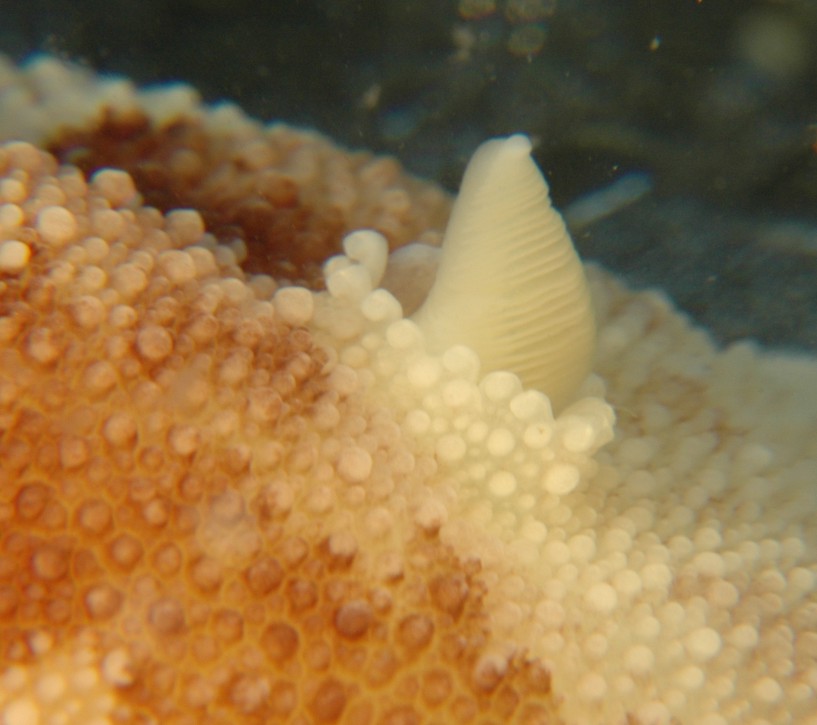Diaulula lentiginosa (Millen, 1982)Common name(s): Giant freckled dorid |
|
| Synonyms: Anisodoris lentiginosa, Peltodoris lentiginosa |  |
| Phylum Mollusca
Class Gastropoda Subclass Opisthobranchia Order Nudibranchia Suborder Doridacea Family Discodorididae |
|
| aaaulula lentiginosa collected from about 20 m depth, Sares Head | |
| Dave Cowles, July 2006 | |
How to Distinguish from Similar Species: The large size and numerous large blotches make this dorid distinctive.
Geographical Range: Kodiak Island, Alaska to Capa Arago, Oregon
Depth Range: Intertidal (mostly subtidal) to 33 m depth
Habitat:
Biology/Natural History: Feeds on yellow encrusting sponges. Recent evidence (Chu and Leys 2012) also shows that this nudibranch feeds on deep-living glass sponges such as Aphrocallistes vastus and Heterochone calyx, as well as the demosponge Desmacella austini that encrusts them. These are all found in deep sponge reefs (>200 m depth) off the west coast of Canada. This is the first documented instance of animals feeding on glass sponges outside of Antarctic waters.
| Return to: | |||
| Main Page | Alphabetic Index | Systematic Index | Glossary |
References:
Dichotomous Keys:(not in Kozloff)
General References:
Behrens,
1991 (As Anisodoris lentiginosa)
Scientific Articles:
Chu,
Jackson W.F. and Sally P. Leys, 2012. The dorid
nudibranchs Peltodoris
lentiginosa and Archidoris odhneri
as predators
of glass sponges. Invertebrate Biology 131:2 pp. 75-81
Dayrat,
Benoit and Terrence M. Gosliner, 2005. Species
names and metaphyly:
a case study in Discodorididae (Mollusca, Gastropoda, Euthyneura,
Nudibranchia,
Doridina). Zoologica Scripta
34: p 199
Web sites:
General Notes and Observations: Locations, abundances, unusual behaviors:
This large dorid is frequently found in rocky subtidal areas around Rosario

The 6 off-white, lacelike gills are in a circle around the anus

The rhinophore is perfoliate and retractable into a sheath.
The
dorsum is covered with tubercles.
Authors and Editors of Page:
Dave Cowles (2006): Created original page